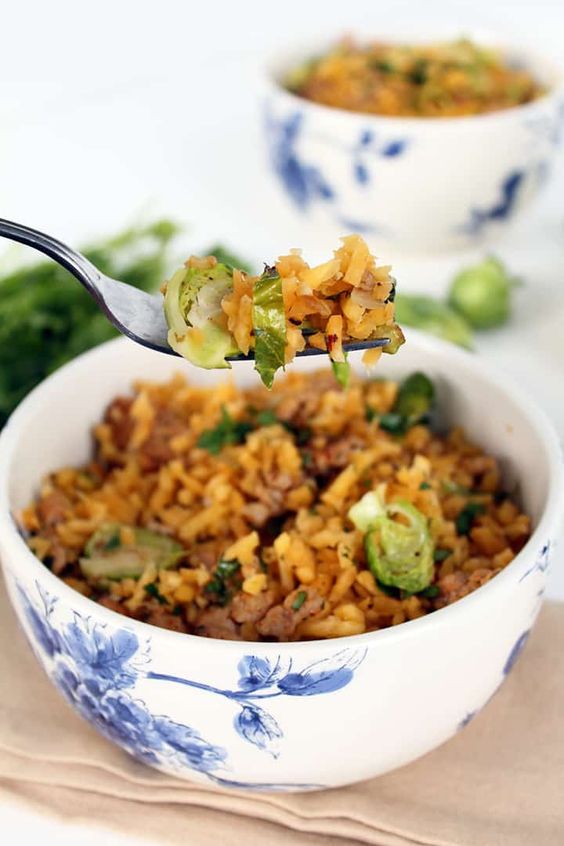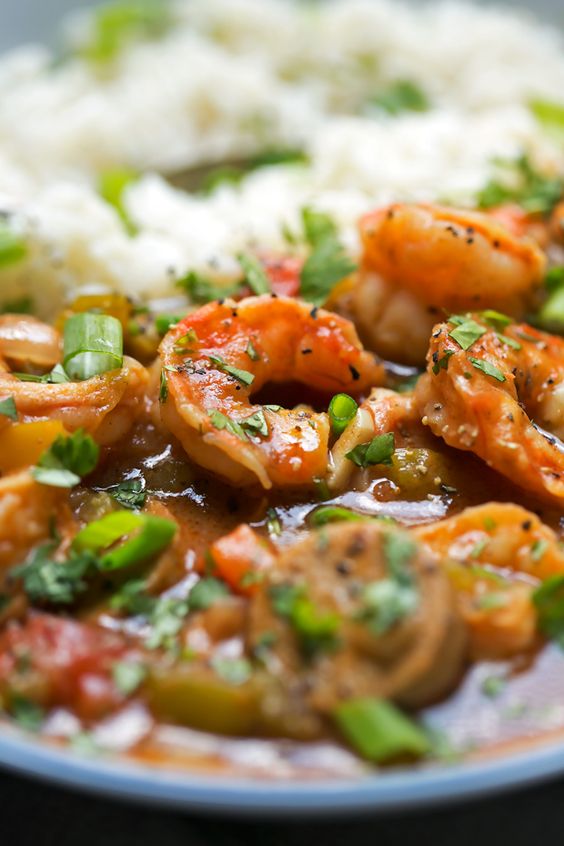
One of the best things you can do for your body is to eat more vegetables. January’s seasonal vegetables are hearty and rich in vitamins and minerals. We will be focusing on the veggies that are harvested each month so you can start building your recipe file. This makes grocery shopping more fun and will give your menus more variety. You will look forward to farmer’s markets each month and your body will thank you for the nutrients of local produce!
January’s Seasonal Vegetables in a Gumbo
Even the most basic vegetables can get a kickstart when you are thinking of them in new ways. Celery is one of January’s seasonal vegetables that tastes delicious as part of Cajun or Creole cooking. Winter soups are extra delicious this time of year and help you achieve New Year’s weight loss goals.
Roux:
½ cup high heat oil, such as canola, corn, or vegetable
½ cup all purpose flour
Gumbo:
1 medium onion, diced
2 bell peppers (I used ½ of each red, green, yellow, orange – see note), diced
3 stalks celery, diced
6 cloves garlic, minced
3 bay leaves
8 ounces andouille sausage, sliced (I used Tofurky)
2 tablespoons EACH: cajun seasoning AND tabasco sauce (more or less to taste)
1 tablespoon cayenne (omit if you want it mild)
4 cups low sodium chicken broth
1 (14.5 ounce can) stewed tomatoes and juices, roughly diced
1 ½ pounds raw shrimp
2 teaspoons gumbo filé
sliced scallions + white rice or quinoa, for serving
Click here for full recipe and instructions. Not only is celery high in Vitamin C, but it also has at least a dozen anti-oxidant nutrients, which helps reduce damage to your cells and organs. Keep celery on hand as a snack, since it requires more calories to consume than it contains (10 per stalk).

Brussels Sprout Rutabaga Rice
Looking for a cooking strategy beyond the basic roasting maneuver? Brussel sprouts and rutabaga are two of January’s seasonal vegetables that can be cooked together. You are probably familiar with Brussels sprouts being high in fiber, Vitamin C (124%), and Vitamin K. Rutabagas look like turnips and are a rich source of calcium, magnesium, potassium, and Vitamins C (160%) and E.
Ingredients:
1 medium rutabaga, peeled, Blade C
1 tbsp olive oil
1 minced garlic clove
1 pinch red pepper flakes
1 shallot, minced
1/2 cup sliced Brussels sprouts
2 chicken sausage links, decased
1/2 tsp oregano flakes
salt and pepper, to taste
1 cup low-sodium chicken broth
freshly chopped parsley, to garnish
Click here for full recipe and instructions. This easy rice dish is gluten-free and paleo, using rutabaga as rice and chicken sausage for an extra kick. If you are new to spiralizing veggies, take a look at our article on zoodles for more ideas.

Best Kale Minestrone Soup
There are a million and one ways to enjoy kale. This minestrone soup recipe combines another three of January’s seasonal vegetables: kale, potatoes, and tomatoes. It’s loaded with vegetables, white beans, and Tuscan kale (which is more tender than red kale). Kale is high in Vitamins K, A, and C. Are you noticing a pattern with this month’s veggies? They are high in the right kinds of vitamins that help your immune system fight the flu season naturally.
Kale Minestrone Soup:
1 tablespoon olive oil
1 medium onion, minced
3 garlic cloves, minced
2 large carrots, minced
1 – 5.5 ounce can tomato paste
4 cups vegetable broth
3 medium red potatoes, diced
2 celery stalks, diced
1 zucchini, diced
1 teaspoon each: oregano, thyme, black pepper
1 – 28-ounce can whole tomatoes
1 – 15-ounce can white beans, drained and rinsed
8 ounces kale, removed from stem and chopped
Juice from 1/2 lemon
Sea salt, to taste
Easy Basil Pesto
2 ounces basil (about 1 cup, loosely packed)
2 ounces parsley (about 1 cup loosely packed)
1/4 cup pine nuts
2 tablespoons olive oil
Juice from 1/2 lemon
2 tablespoons parmesan cheese OR nutritional yeast
Click here for full recipe and instructions. The tomato broth is packed full of rich flavor and the soup itself is topped with simple basil pesto. This soup recipe is easy to make – it just requires plenty of simmer time. Enjoy the leftovers for lunch!

Spinach Artichoke Dip
In the winter, warm dips make the best snacks. Spinach and artichokes are two of January’s seasonal vegetables we love the most! Spinach is rich in Vitamins A, C, and K and boasts hearty doses of magnesium, iron, and manganese. Think stress reduction and lower blood pressure! Considering the fiber and protein benefits of artichokes, how can you resist digging into this yummy, creamy dip?
Ingredients:
8 oz cream cheese, softened
2/3 cup sour cream
1/3 cup mayonnaise
2 cloves garlic minced
1 1/2 cups mozzarella cheese, divided
1/2 cup fresh shredded parmesan cheese
1/2 cup gruyere cheese
10 oz frozen chopped spinach, defrosted and squeezed dry
14 oz marinated artichoke hearts chopped
For Serving:
1 baguette (optional)
olive oil
Click here for full recipe and instructions. Many people love eating artichoke dip with baguette slices but we like it just as well on chips. Cheese lovers will especially love the blend of cream cheese, mozzarella, and Gruyere.

Creamy Garlic Butter Tuscan Mushrooms
Italian dishes are at the heart of this month’s cooking. Mushrooms are a tantalizing choice when it comes to January’s seasonal vegetables. Mushrooms contain a powerful antioxidant called selenium, which supports the immune system. You can even boost their Vitamin D content by placing them ‘bottoms up’ in a sunny windowsill for 1-2 hours. Who knew?
Ingredients:
2 tablespoons salted butter
4 cloves garlic, finely diced
21 oz (600 g) mushrooms, washed and dried with paper towel
1 small onion, chopped
1/2 cup white wine, (optional)
5 oz (150 g) jarred sun dried tomato strips in oil, (reserve 1 tablespoon of the jarred oil for cooking)
1 1/2 cups heavy cream, (see notes)
Salt and pepper, to taste
3 cups baby spinach leaves, washed
1/2 cup fresh grated Parmesan cheese
1 teaspoon cornstarch, (optional — mix cornstarch with 1 tablespoon water for a thicker sauce)
1 teaspoon dried Italian herbs
1 tablespoon fresh parsley, chopped
Click here for full recipe and instructions. You can eat this low-carb, vegetarian dish alone or as a topping over mashed potatoes or cauliflower rice. It’s quick and easy to make (just 15 minutes) and is super versatile alongside any meal.

January Harvest
Stay well and feel great by upping your vitamins and minerals this month. January’s season vegetables are: artichokes, asparagus, broccoli, Brussels sprouts, cabbage, carrots, celery, kale, lettuce, mushrooms, potatoes, rutabagas, spinach, sweet potatoes, tomatoes, and turnips. Enjoy these recipes and stay tuned for next month’s batch of vegetables to try.


MMmmmm… Kale and Artichoke… and Spinach too! Mix it all with Brussels Sprouts! Oh to die for! Make mine medium rare.